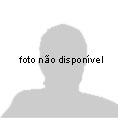XINFORMAÇÕES SOBRE DIREITOS AUTORAIS
As obras disponibilizadas nesta Biblioteca Digital foram publicadas sob expressa autorização dos respectivos autores, em conformidade com a Lei 9610/98.
A consulta aos textos, permitida por seus respectivos autores, é livre, bem como a impressão de trechos ou de um exemplar completo exclusivamente para uso próprio. Não são permitidas a impressão e a reprodução de obras completas com qualquer outra finalidade que não o uso próprio de quem imprime.
A reprodução de pequenos trechos, na forma de citações em trabalhos de terceiros que não o próprio autor do texto consultado,é permitida, na medida justificada para a compreeensão da citação e mediante a informação, junto à citação, do nome do autor do texto original, bem como da fonte da pesquisa.
A violação de direitos autorais é passível de sanções civis e penais.
As obras disponibilizadas nesta Biblioteca Digital foram publicadas sob expressa autorização dos respectivos autores, em conformidade com a Lei 9610/98.
A consulta aos textos, permitida por seus respectivos autores, é livre, bem como a impressão de trechos ou de um exemplar completo exclusivamente para uso próprio. Não são permitidas a impressão e a reprodução de obras completas com qualquer outra finalidade que não o uso próprio de quem imprime.
A reprodução de pequenos trechos, na forma de citações em trabalhos de terceiros que não o próprio autor do texto consultado,é permitida, na medida justificada para a compreeensão da citação e mediante a informação, junto à citação, do nome do autor do texto original, bem como da fonte da pesquisa.
A violação de direitos autorais é passível de sanções civis e penais.
Coleção Digital
Título: DEVELOPMENT AND VALIDATION OF A METHOD FOR PESTICIDE ANALYSIS IN FOOD PRODUCE FROM THE STATE OF RIO DE JANEIRO USING GAS CHROMATOGRAPHY WITH TANDEM MASS SPECTROMETRY Autor: DANIELA RODITI LACHTER
Instituição: PONTIFÍCIA UNIVERSIDADE CATÓLICA DO RIO DE JANEIRO - PUC-RIO
Colaborador(es):
CARLOS GERMAN MASSONE - ADVISOR
ADRIANA HADDAD NUDI - CO-ADVISOR
Nº do Conteudo: 37039
Catalogação: 20/02/2019 Liberação: 20/02/2019 Idioma(s): PORTUGUESE - BRAZIL
Tipo: TEXT Subtipo: THESIS
Natureza: SCHOLARLY PUBLICATION
Nota: Todos os dados constantes dos documentos são de inteira responsabilidade de seus autores. Os dados utilizados nas descrições dos documentos estão em conformidade com os sistemas da administração da PUC-Rio.
Referência [pt]: https://www.maxwell.vrac.puc-rio.br/colecao.php?strSecao=resultado&nrSeq=37039@1
Referência [en]: https://www.maxwell.vrac.puc-rio.br/colecao.php?strSecao=resultado&nrSeq=37039@2
Referência DOI: https://doi.org/10.17771/PUCRio.acad.37039
Resumo:
Título: DEVELOPMENT AND VALIDATION OF A METHOD FOR PESTICIDE ANALYSIS IN FOOD PRODUCE FROM THE STATE OF RIO DE JANEIRO USING GAS CHROMATOGRAPHY WITH TANDEM MASS SPECTROMETRY Autor: DANIELA RODITI LACHTER
ADRIANA HADDAD NUDI - CO-ADVISOR
Nº do Conteudo: 37039
Catalogação: 20/02/2019 Liberação: 20/02/2019 Idioma(s): PORTUGUESE - BRAZIL
Tipo: TEXT Subtipo: THESIS
Natureza: SCHOLARLY PUBLICATION
Nota: Todos os dados constantes dos documentos são de inteira responsabilidade de seus autores. Os dados utilizados nas descrições dos documentos estão em conformidade com os sistemas da administração da PUC-Rio.
Referência [pt]: https://www.maxwell.vrac.puc-rio.br/colecao.php?strSecao=resultado&nrSeq=37039@1
Referência [en]: https://www.maxwell.vrac.puc-rio.br/colecao.php?strSecao=resultado&nrSeq=37039@2
Referência DOI: https://doi.org/10.17771/PUCRio.acad.37039
Resumo:
The present work regards the implementation and validation of a method for analysis of pesticide residues in produce from the state of Rio de Janeiro for the improvement of the national health system. Pyrethroids and triazines class pesticides were analyzed for this research. The samples were collected at CEASA in the city of Rio de Janeiro, since it is the main fruit and vegetable distribution center in the city. The produce chosen for the analyses were apple, mango, strawberry, cucumber and tomato. After optimization of the chromatographic conditions, extraction methodology and evaluation of the parameters linearity, selectivity (matrix effect), repeatability, recovery, homocedasticity and limits of detection of the method, the samples were collected, from November 2016 to February 2017. The QuEChERS method was used for the extraction of pesticide residues and the PSA method was used for the purification of extracts, both in triplicates. The extracts were analyzed by gas chromatography with tandem mass spectrometry in Selected Reaction Monitoring mode (Multiple Reaction Monitoring). A short run method was achieved for the determination of 41 pesticides with two precursor-product for each analyte. The analitycal method showed several advantages - quick, cheap, easy, effective, rugged and safe. The detection limits were 1,34 ng/g and 10,22 ng/g. The majority of the pesticides analysed (78 per cent) were below this result. For tomato and cucumber, the only quantified compounds were close to their respective detection limits. For the analysis of mango pesticides, some peaks of higher concentration for propargite and lambda-cyhalothrin were observed. The first one is not authorized by ANVISA and the second, although present, was found below the limit established by this agency. The apple and strawberry crops showed the highest contamination by pesticides (38 and 444 per cent, respectively), many of which were not authorized by ANVISA. CEASA
is a large food distribution center, so it is supplied by different distributers. The variability of the sources of food collected is very large. A more representative study on the quality of food would require a higher number of samples with a higher frequency of sampling.
| Descrição | Arquivo |
| COMPLETE |






